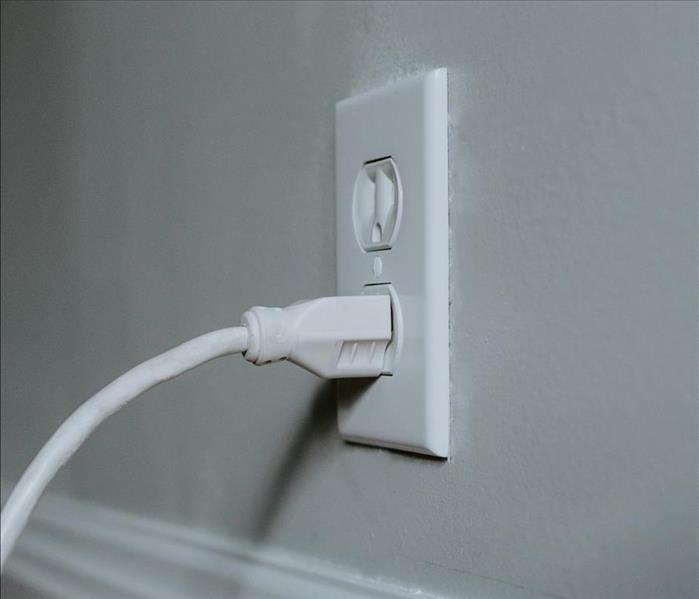A Guide to Electrical Outlet Safety
5/12/2021 (Permalink)
It’s a common dilemma that we have all faced at one point or another: Standing perplexed, holding an electrical cord in our hands, questioning whether it is safe to plug in. Would one more plug in the outlet make that much of a difference? The reality is, the consensus on electrical outlet guidelines are blurry, prompting poor decisions that could result in an electrical fire. Electrical malfunctions, according to a study conducted by the National Fire Protection Agency in 2012 and 2016, were the second leading cause of residential fires. So, how many cords is too many? In order to be sure that you are taking every precaution to prevent an electrical fire from igniting in your home, keep reading.
Statistics About Electrical Fires
It is important to first understand the most common reasons as to why electrical fires ignite in homes. A 2018 report on Residential Building Electrical Fires published by FEMA found that from 2014 to 2016, one of the first items to catch fire in homes during electrical fires is electrical wire. 12 percent of electrical fires involved outlets and receptacles, while 5 percent stemmed from extension cords. In light of this information, it is crucial that we navigate outlets, cords, and electrical wires carefully.
Guidelines
In the FEMA report, a long list of guidelines related to fire safety when utilizing appliances, outlets, and extension cords is provided.
Appliances
FEMA reports that appliances, including refrigerators, washing machines, and microwaves, must be plugged into wall outlets instead of indirect, alternative power sources. It is also recommended that appliances’ wires and electrical cords be surveyed on a regular basis for possible damage, which may include loosening or cracking, in order to decrease the chances of an unexpected electrical fire.
Outlets and Extension Cords
Extension cords provide a quick solution when we have more to plug in than what an outlet can handle. However, this renders extension cords even more hazardous, which emphasizes the importance of never overloading an extension cord. Usually, you should be able to find an extension cord’s capacity on its packaging. Extension cords with internal overload protection are recommended. Similarly, wall outlets should not be overwhelmed with a greater number of plugs than there are outlets available. Additionally, two-prong outlets should not be utilized for three-pronged electrical cords.
Where SERVPRO Can Help
It is possible for homes and residences to fall victim to electrical fires as a result of accidents, even when precautionary measures are taken. This is where SERVPRO of Harrisburg West steps in. We are standing by, ready to lend a hand in the event that your home endures an unexpected electrical fire. Know that our professional fire services are designed to mend your fire-damaged residence, restoring it to its previous condition. Check out our website to learn about more of our fire-related services, including our Fire Damage Tips and Fire Restoration Process. Don’t wait. Pick up the phone and call SERVPRO of Harrisburg West at (717) 510-6779 for our trusted residential fire damage restoration services.





 24/7 Emergency Service
24/7 Emergency Service
